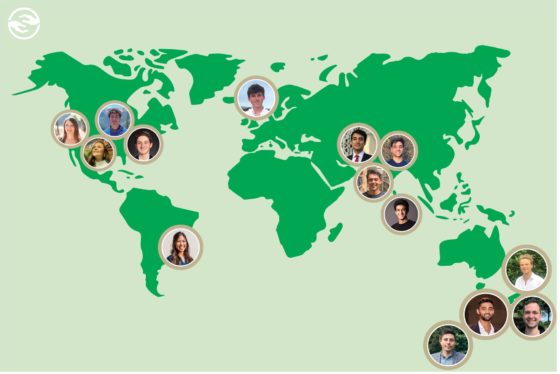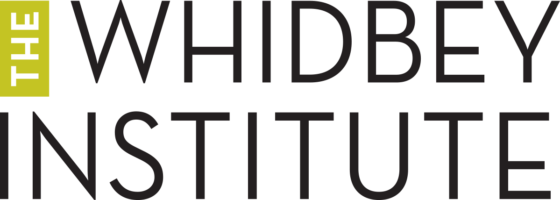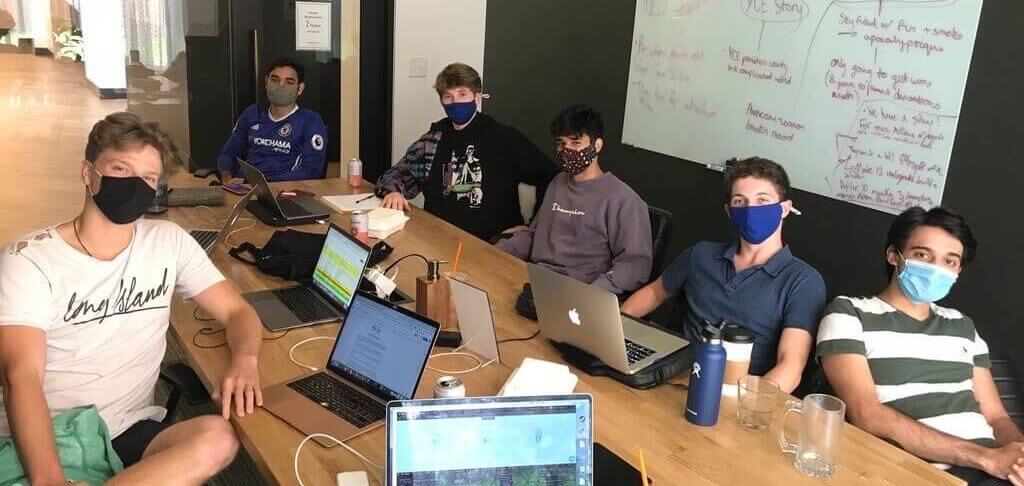By Marnie Jackson
A few months ago, I got an email from Daniel, a Duke University student, about a new nonprofit called You Change Earth. Its stated mission: “Millions of caring people could be making a difference for our environment, yet simply don’t know how. We are dedicated to helping every one of these people find their role in the climate solution.”Daniel wondered if I might be interested in learning more, or helping spread the word, about You Change Earth.
I started by checking out the You Change Earth website, which states, ”There is so much we can do. . . . Take back hope. Start changing Earth with the actions tailored to you.” With the click of a few buttons, I got personalized recommendations about easy next steps for personal climate action. I found these recommendations to be diverse, adaptable to many lifestyles, and grounded in sound, peer-reviewed science. Green my diet. Reduce waste. Use my voice. The list went on!
In my brief visit to the You Change Earth website, I selected eight projects that interested me. Under each project I found tips, resources, and compelling facts with links to reputable sources. The broad range, varying scale, and sound scientific grounding of the recommendations I received made it seem like taking a next step for climate action would be easy and effective no matter what my bandwidth or budget. I was intrigued, and I reached out to the organizers to learn more.
Here’s an excerpt from my conversation with You Change Earth team members Alec James, Saad Ibrahim, and Daniel Levy. The three students are members and spokespeople for an international team spanning five continents.

Marnie: Can you tell me how this thing got started?
Alec: This emerged out of a conversation co-founder Will Reynolds and I had about ten months ago. We were both frustrated with how many barriers there seemed to be with taking political action for the planet. Will and I wanted to empower people to press for the kind of systemic change that’s needed, and to do that we thought we’d better collect and synthesize the information out there. There’s so much data showing how to take truly meaningful climate action and how to create change within our homes and our businesses. There were five of us involved by the time the project got started.
Daniel: Many people are oriented toward climate action but share this frustration—where to begin? It’s easy to see a documentary, read an article, and feel motivated to take action, but as soon as we go online we get overwhelmed with information. This can cause people to lose motivation. We want to provide information in a format that supports making climate action a priority, where follow-through is easy and where people feel they have the means to immediately act.
Marnie: Have you encountered any challenges, frustrations, or hurdles?
Alec: We had a large initial time investment in researching the question of, “what are the most influential actions you can take?” Finding the information is relatively easy, as there’s lots of sound research out there, but there’s so much of it. We spent three months working with two 24 year-old designers from New Zealand and doing user testing to find out what kind of level of simplicity would drive the most people to action.
Saad: We want to get this tool into as many hands as possible, and especially into the hands of people who care about climate but don’t know how to help. As a nonprofit, outreach has been challenging. We’ve had to figure out how to grow partnerships and reach out via social media to keep costs down.
Daniel: Given the COVID pandemic and the host of other things that have happened and are happening, a lot of folks have put climate action on the back burner. Often when we reach out, we find that organizing with a student-led nonprofit is not a high priority. It’s awesome when we get in contact with someone like you who sees the potential in our work and wants to make it more visible.
Alec: The pandemic has been truly devastating, but in our pandemic response we can see a tipping point in mindset: through individuals being conscientious of others—for instance, through wearing a mask to reduce the spread, we can improve outcomes for everyone. What lessons can we take from this for the climate movement?
Daniel: Personal agency is so important. In modern life, attention spans are short and people are distracted. We believe that if we can get people past thinking, “this is so much bigger than me, I’m not really a part of this,” to thinking, “here’s one simple step that I can take today,” we’ll be able to make a change. This will help us get past the tragedy of the commons, and serve as a tool to rally momentum among individuals.
Marnie: Once someone is connected to your website and engaging with some recommended projects, what’s next?
Alec: Our main goal isn’t to get people to take these steps, go through these guides—our main goal is to overcome the hurdles put up by political systems and human nature and get people engaged with climate action. After they’ve gone through our site, selected a couple projects, and started to feel good about the difference they can make, we send people on to communities where they can get, and stay, involved. This site is about getting people to change their habits and their mindset. If we get enough people to care about climate action and feel empowered, we will start to see real change.
Saad: Our website does not mean to take away from the importance of activism or political action, which we acknowledge can have a greater impact than any of the individual projects we suggest. Our goal is to get people involved, get climate change into their head, get climate action into their daily lives, and inspire climate activism as their end goal.
Alec: we want our website to be a tool, but we certainly don’t want to keep users contained on our site. Once people have completed one or two projects on our site, we want to direct them to places where they can grow relationships and join networks. We are compiling lists of localized resources, such as 350.org local chapters, where people can sign up, stay involved, and get additional resources.
Marnie: What else would you like to share with readers?
Alec: I’ve appreciated the community that already exists around climate advocacy and action, and the help we’ve received. In my outreach work I’ve gotten so much support and good advice. Every conversation has been helpful.
Daniel: Part of our outreach methodology includes reaching out to experts in specific fields to make sure the information we provide is accurate. We only share information from peer-reviewed scientific studies, and sometimes we reach out to experts with the question of, “if you could provide the ultimate guide to your field of study, what would you include?” These leaders in their fields have a lot to do, and we’re always grateful when they contribute to our collection of resources.
I’d add that we’d really like to get these resources in the hands of more people, and we welcome any advice about how to spread the word, get our guides in front of conscientious people of all ages and demographics, and increase awareness among people who might not know how to take action for our climate.
So much of the media surrounding climate change is disheartening. You Change Earth wants to change that attitude—yes, we have limited time to prevent these disastrous consequences, but there is so much each of us could be doing to help right now! It all starts with a change in mindset, and ends with systemic change.
___________________________
To change our collective future, You Change Earth wants to empower each of us to change our personal behaviors—then, with easy first steps under our belts, to connect us to communities for sustained support and action.
Do you know someone who might benefit from You Change Earth’s tools and tips? To spread the word about You Change Earth in your network or to try their approach yourself, visit www.youchangeearth.org.

